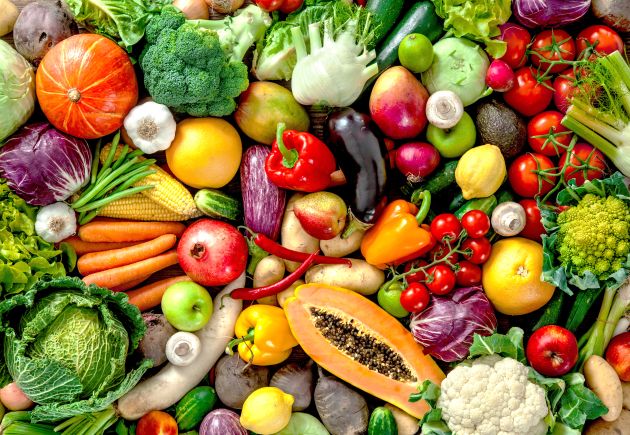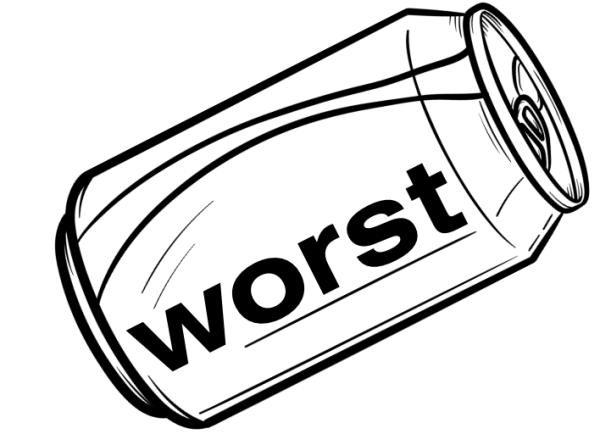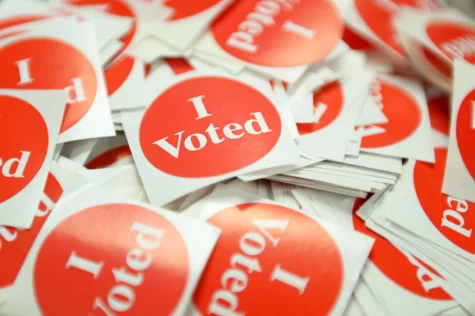Vegetarianism: Helping Our Green and Furry Friends
January 17, 2022
How much meat do you think we, as humans, consume? You probably don’t even know how much your meat weighs so how could you be expected to put a value on that. What if I told you that the value is 350 million tons. To put that into perspective that is how much 350 million cars would weigh. The average American consumes around 260 pounds of meat per year just by themselves. Not only is that number ridiculous, but it is also increasing. Now, do these statistics really mean anything if we just say them with no exterior context? Why should we care?
Now, though all of this is happening in relation to meat consumption, what does it mean? Do these statistics and facts inflict any form of harm? Unfortunately, they absolutely do which is why these must be taken into consideration. First off, if we look at meat consumption, for us to consume that much meat, we kill 77 billion land animals every single year. We should most certainly care that we are inflicting direct harm on so many animals to make that meat consumption possible. Not only are they killed, but hundreds of millions of them are tortured in the process. Additionally, we do not even properly consume all of that meat; approximately 26% of the meat in the United States goes to waste every year and similar rates apply all over the world. Those numbers do not even take into account how many fish and sea animals are being harmed every single year. At least 1 trillion fish are killed each year for human consumption and once again over 20% of those fish are wasted. We should first consider these injustices because of the harm we are inflicting on other living creatures.
In addition to the direct harm inflicted on the animals, the meat consumption that takes place is contributing to climate change at very high levels with no sight of decreasing. Our meat consumption puts out methane into the atmosphere and this can contribute to over 70% as much warming as the same amount of Carbon Dioxide would despite methane not lingering on as much. Additionally meat and dairy account for 15% of global greenhouse gas emissions; in other words, if we started to cut down on our meat consumption, we would be drastically helping out the climate as well. Moreover, the environmental injustices taking place in the status quo are happening at very extreme rates. The climate is warming at a rate that is approximately 10 times faster than when the ice age was recovering and CO2 rates from humans are following similar growth patterns at an alarming rate.
So, we know that harming animals is bad, but why does it matter that the climate is warming? As the statistics show, this animal cruelty also leads to great amounts of carbon emission which contribute to climate change. We have already seen many fires and climate change shortcomings and these are only going to increase if we do not cut down on carbon emissions. Though not much direct harm has been done to humans, it will certainly be on its way if action is not taken. So in addition to the animals that are harmed in our meat consumption, the climate change taking place can be attributed to that as well.
So what should be done? How can we go about giving the animals that are harmed through meat consumption some form of justice and those who are to be slaughtered in the future a proper life? The first and rather obvious solution is to completely cut off meat consumption – yes – that means that humans will no longer be consuming meat. This solves our problem in a very straightforward fashion because if millions of animals are killed every year for consumption, but we stop using them for consumption then obviously all those animals will not be harmed. Additionally, if a large portion of greenhouse gas emissions (15%) are coming from meat and dairy consumption and we proceed to completely cut it off, then that will drastically decrease those emissions and hence, help provide some healing room for the climate. Therefore, by completely cutting out meat consumption – a very extreme proposal – we do solve the problem of animal cruelty and also help mitigate our issue of climate injustice.
So why should we choose this solution as opposed to any other plausible solution? Well first we must establish the latter – is this solution even plausible? At first look, this may seem ridiculous and not even doable but when you break it down into parts it becomes reasonable. Moreover, if the process is reasonable, the result in terms of solving our initial problem is excellent. First, we must look at the monetary costs of cutting out meat production. The fact of the matter is that meat is one of the cheapest foods to make which is part of the reason it is not just made so much but overproduced; people just do not want to spend great amounts of money on something so basic as food and meat is an easy go for that. Another important thing is the nutrients that meat offers and also its taste. Countless Americans adore their meat; they could not sacrifice the great taste of their bacon and sausage. This is where vegan meat comes into play and knocks out all the issues we encounter when it comes to removing meat from an individual, consumer perspective. First and foremost for most people, vegan meat is starting to taste more and more like regular meat with new technologies that many companies are beginning to utilize and advance. Additionally, if it does not taste exactly like meat, there are flavorings you can add to get as close as possible to a replicable taste. Furthermore, from an individual health perspective, red meat has been shown to increase the risk of many illnesses such as diabetes and heart disease which vegan meat does not do. For the second issue that is encountered when it comes to going to vegan meat, the cost, we are also beginning to see great improvements. It is indeed more expensive to produce vegan meat than it is to produce regular meat, however, these costs are beginning to go down thanks to new ways to produce vegan meat more efficiently and effectively, and in time we will be able to make sufficient meat for consumption without harming animals. Therefore, since this solution can help from an individual perspective, an animal perspective, and the environment’s perspective, it is a valid and positive solution.
Another solution is to begin to launch government-funded advertising campaigns to get people to drift away from meat at their own will and also provide consumer subsidies. In other words, the goal would be to use persuasion, facts, and evidence-based explanations to the general public to make them organically shift towards a meatless diet. The campaigns would display how meat is not only harmful to animals and the environment but also the individual themselves which will be more likely to convince them. This will solve the problem because as people start buying and consuming less and less meat, inevitably, it will get produced less and less which is exactly what is wanted; because fewer people will on their own decisions they do not need the fruits of animal cruelty, there will be no more need for animal cruelty. This method would gradually decrease the issue of animal cruelty because the markets will notice that even more meat is not being used and hence, producers will see that they need to decrease their meat production for their economic benefit. Additionally, this method will also gradually decrease the greenhouse gases that are output into the atmosphere. As the producers start producing less and less meat, then the greenhouse gases will decrease similarly. Thus because the solution of government campaigns to encourage people to shift away from meat and also provide benefits for doing so decreases both animal cruelty and greenhouse gases, it solves our problem.
So what are the benefits of this solution? The first reason why this solution could be deemed beneficial is because of the effort paradox. What this says is that people are more likely to do things when they are not directly forced to but rather just given some sort of incentive which is exactly what this solution does. This solution is not just straight-up banning meat like the previous solution but just explaining to people what consuming meat does to their body, the animals, and the environment. This solution will explain to consumers how the meat consumption supply chain impacts the environment throughout its cycle and how additionally the animals that are harmed in the process of creating that meat are contributing to 15% of greenhouse gas emissions, and that if we stop harming the animals those numbers will inevitably go down. We can also include graphic images of animals being harmed to bring out soft spots from consumers because many are unaware that the meat that is consumed is created and this will bring awareness to that. Then we can also show consumers the benefits their health will experience as a result of some sort of transition away from meat. This solution will cover how red meat increases the risk of type 2 diabetes, certain cancers, stroke, and heart disease. Additionally, being vegetarian decreases the risk of all of those things and is also good for your heart health. Not only will this solution use low-cost methods such as getting the word out it will also provide monetary benefits to those actively trying to cut out meat from their lives. This will not only take care of the extra cost that comes with vegan meats and meatless foods in general – which is a big concern for those looking to consume less meat in the first place – but it provides even further benefit through a subsidy. Therefore, because this solution uses more organic methods of solving the issues at hand while still effectively mitigating them, it is a valid solution.
So which solution is better? Which solution will solve our problems of environmental injustice and animal cruelty while remaining reasonable? The best solution to our problem is our second solution: launch government-funded advertising campaigns to get people to drift away from meat at their own will and also provide consumer subsidies for doing so. This is a superior solution for a few reasons. First, this solution utilizes absolutely no form of force to reach our desired goal which pretty much any other solution uses. We are simply using means of advertising to spread awareness about the issues at hand and then giving financial incentives to then take further action. This is preferred because it has been shown that people are substantially more likely to ‘comply’ when you do not force them into something and rather just layout benefits for them to do so. Additionally, much of the knowledge surrounding animal cruelty is not known and many of the practices are hidden. If more and more people were shown what companies like Fairlife do to their animals, they would be more inclined to drift away from meat. Furthermore, only around 60% of Americans have said they are truly concerned about climate change. These numbers can be increased with more available information surrounding the subject which currently is not sufficient. Along with that, people currently are incentivized to consume meat products from a financial standpoint. It is much cheaper to have a meat dominant diet than one free of meat and hence many people consume meat for that reason. Thus, creating subsidies for people to consume meatless products, and over time dragging down the cost of having a meatless diet, more people will drift towards that without even being forced to do so.
So why is this superior to other solutions; what about the cost? Though we are not directly forcing people to change their lifestyle, we are trying to change consumers’ actions, even if it is done indirectly and hence will come at a cost. This is still superior to other methods where we directly force meat out of their diet. The costs of spreading awareness are virtually negatory. We can first agree with the media platforms for them to just display the ads (since this would be done by the government). Then any costs associated with that will be such a small fraction of the budget that it is not much to worry about. The part where the cost is of concern is with the consumer subsidies; how are those to be funded? Simply put, we will levy a tax on meat producers and use the money from there to fund the consumer subsidies making it a win-win in terms of solving our problem. This is effective because it is better to levy a tax than straight-up ban production. Banning the production and consumption of meat would simply lead to crazy amounts of uprisings and tension for those who love meat. Additionally, banning meat provides no promise that the price of meatless products will be driven down. The vegan companies could just raise prices at will. With this solution, we are decreasing the incentive to produce and consume meat while simultaneously canceling out the costs. The last cost that will have to be worried about are those employed in the meat industry. Using this slower approach allows those in the industry time to transition rather than just eliminating all of their jobs at once. In terms of many of the jobs on the biotech side, they can be transferred over to vegan meat and similarly many of the other jobs in the industry can be transferred to other parts of the food industry. As for the meat companies, they will have to suffer the consequences.










